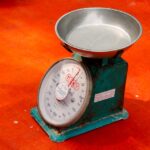Our homes should be a place of safety and comfort, but unfortunately, they can also harbor hidden dangers that we may not even be aware of. From everyday household items to structural issues, there are a number of common hazards that can pose a risk to our health and well-being. It’s important to be aware of these dangers so that we can take steps to address them and keep ourselves and our loved ones safe.
One of the most common household hazards is poor indoor air quality. Many homes are filled with pollutants such as mold, dust mites, pet dander, and volatile organic compounds (VOCs) from cleaning products and furniture. These pollutants can exacerbate respiratory conditions like asthma and allergies, as well as contribute to other health issues like headaches, fatigue, and even more serious conditions like cancer. To improve indoor air quality, make sure to regularly clean and vacuum your home, use air purifiers, and open windows for ventilation.
Another hidden danger in many homes is lead paint. Homes built before 1978 may have lead-based paint on the walls, which can pose a serious health risk, especially to young children. Ingesting lead paint chips or inhaling lead dust can lead to lead poisoning, which can cause developmental delays, learning disabilities, and other serious health issues. If you suspect your home may have lead paint, it’s important to have it tested and properly removed by a professional.
Carbon monoxide is another silent killer that can lurk in our homes. This odorless, colorless gas is produced when fuel like gas, oil, or wood is burned, and can build up in poorly ventilated or malfunctioning appliances like furnaces, water heaters, and stoves. Carbon monoxide poisoning can cause symptoms like headaches, dizziness, and nausea, and can be fatal if not detected early. To protect yourself from carbon monoxide poisoning, make sure to install carbon monoxide detectors in your home and have your appliances regularly inspected by a professional.
Other common household hazards to watch out for include tripping hazards like loose rugs and clutter, electrical hazards like frayed cords and overloaded outlets, and fire hazards like unattended candles and unclean chimneys. By being aware of these hidden dangers and taking steps to address them, we can create a safer and healthier home environment for ourselves and our families.
In conclusion, our homes may not always be as safe as we think. By being vigilant and proactive in identifying and addressing common household hazards, we can help prevent accidents and illnesses that can result from these dangers. Remember to regularly inspect your home for potential hazards, take steps to improve indoor air quality, and install safety devices like smoke alarms and carbon monoxide detectors. Your home should be a place where you feel secure and protected, so don’t let hidden dangers jeopardize your health and well-being.




